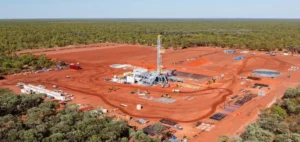Nigeria LNG declares force majeure this week after heavy floods affect all its suppliers.
Critical flooding
Nigeria LNG has an estimated LNG production capacity of 22 million tons per year. Nigeria LNG’s force majeure threatens nearly 4% of global supply. European countries and gas traders are being hit hard by disruptions to LNG supplies from Nigeria.
The floods further reduce access to crucial resources for a European continent in need of Russian gas. Nigeria LNG says it is working to minimize the impact of the incident. Nevertheless, the water level continues to rise and the company does not give any time frame for restarting.
Losses for Galp Energia
Portugal imported more than half of its LNG from Nigeria last year. Replacing each lost Nigeria LNG cargo on the spot market will be expensive. The Portuguese gas company Galp Energia is said to be suffering losses of about €100 million before taxes.
The company receives about two to three LNG cargoes from Nigeria per month. Galp Energia announces that it may face disruptions. The company says it does not know when local recovery will begin or if there will be additional disruptions due to indirect impacts.
Other importers affected
Delays and interruptions in Nigeria LNG supply force Galp to purchase LNG at higher prices. These incidents related to the supply of the Portuguese firm cost €135 million in losses in the first six months of the year. Shell is also exposed as the main buyer of Nigeria LNG.
Shell has a contract to supply 6.5 million tons per year. This represents about 13% of its LNG volumes. Total, the second largest buyer of LNG from Nigeria LNG, imports about 3 million tons of LNG per year.
Global impact
These blackouts come at a time whenEurope is trying to consolidate its gas stocks before the winter. LNG is emerging as a major alternative to Russian gas supplies. In addition, there are unexpected disruptions in the United States, Nigeria and Australia.
Approximately 18 to 20 freighters supply the European power plants every month. Freeport LNG, the second largest LNG exporter in the United States, was handling similar volumes before it shut down operations in June following an explosion. However, unlike Freeport LNG, Nigeria LNG is not completely shut down.






















